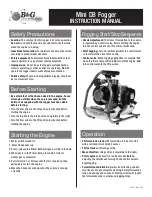
15
• If R
PE
>1 Ω, the result for R
PE
is shown on the display and an X symbol appears
next to the RPE value. “FAIL” is shown on the display to indicate that the test
has been aborted.
• If R
PE
is higher than the permissible limit (≤ 0.3 Ω up to a length of 5 m) but <
1 Ω, there is no rating displayed behind the measured value. The “tAble” symbol
is displayed, and the test sequence stops.
• Is displayed measured value is acceptable (according to limit values and the
length of the DUT lead) must be decided by test person.
• Press the button (2) to accept the measured value. A tick symbol appears next to the R
PE
value.
• Press the button (3) to reject the measured value. An X symbol appears behind the R
PE
value. If the test has was
aborted, “FAIL” is shown on the display.
• If R
PE
≤ 0.3 Ω, the measured value for R
PE
is displayed and a tick symbol
appears behind the R
PE
value. The R
PE
measurement will be performed again,
with reverse polarity. The higher value of both measurements is shown.
• The
insulation resistance
test is started after R
PE
test passed successfully.
• If “LO LOAD” appears on the display, should be checked if DUT is switched on.
• If the DUT is on but the load R
L-N
> 6 kΩ, press the button (2) to proceed with
the test sequence.
•
Very high load (R
L-N
< 14 Ω, ILOAD > 16 A) from the DUT is presented by
“HIGH LOAD” on the display. In such a case, there is a risk of a short-circuit or
earth fault. Check for a short-circuit between the external conductor (L) and the
neutral conductor (N) on the device under test.
• If there is no short-circuit, press button (2) to proceed with the test sequence.
• Beside the R
ISO
value will be shown a tick symbol (f the R
ISO
is higher than the permissible minimum value).
Protective conductor current (differential current measurement method) – Differential Leakage Current
• After the R
ISO
measurement GT-6000 v2 stops the test sequence and prompts the user to switch the mains voltage
from 230 V to the test socket (“I
LEAK
” symbol flashes).
















































